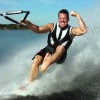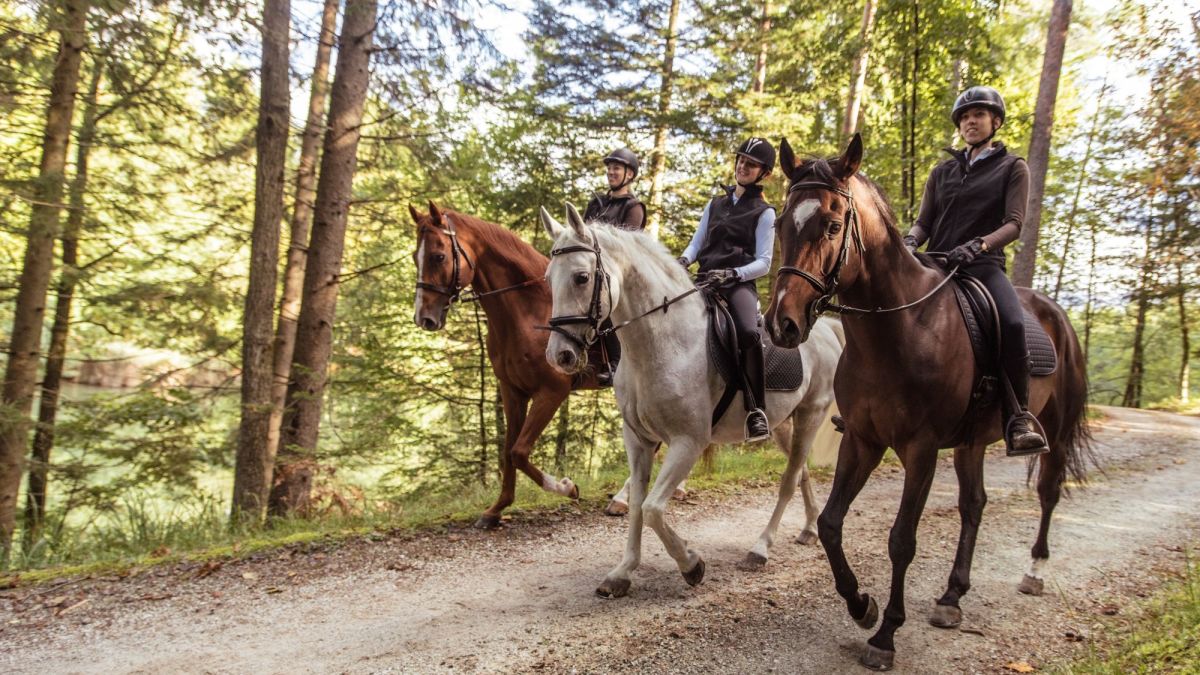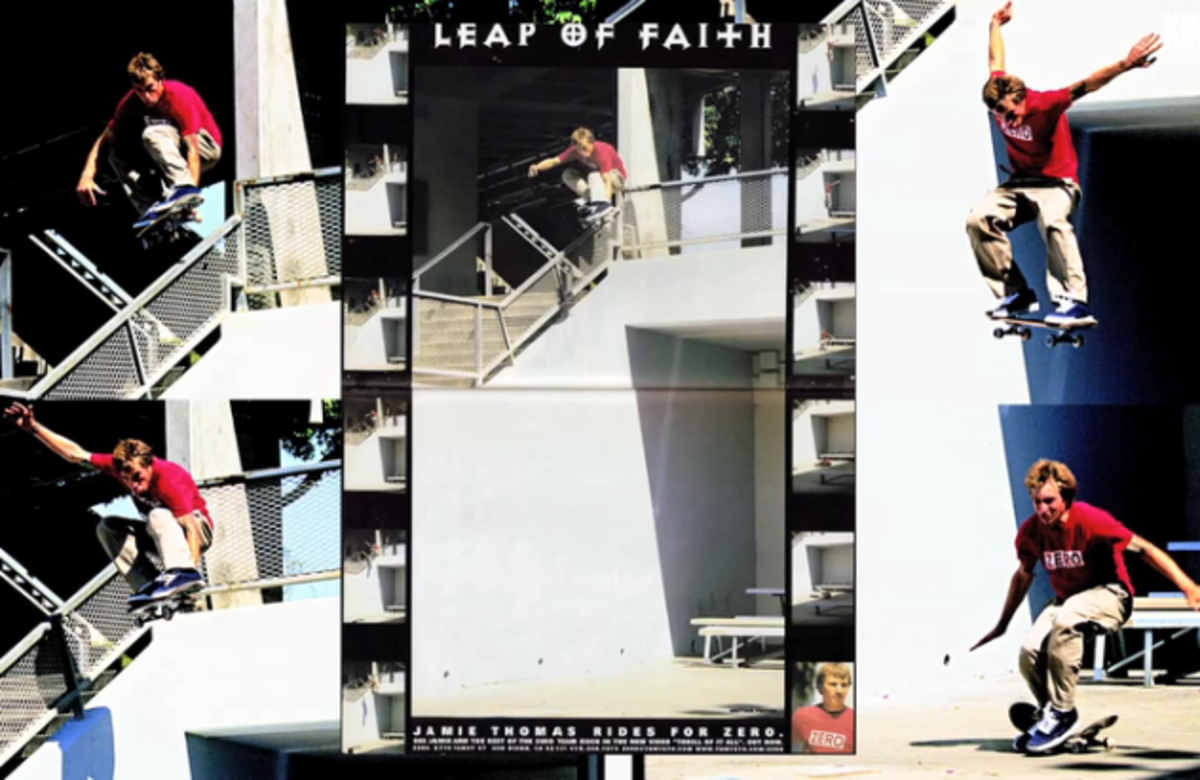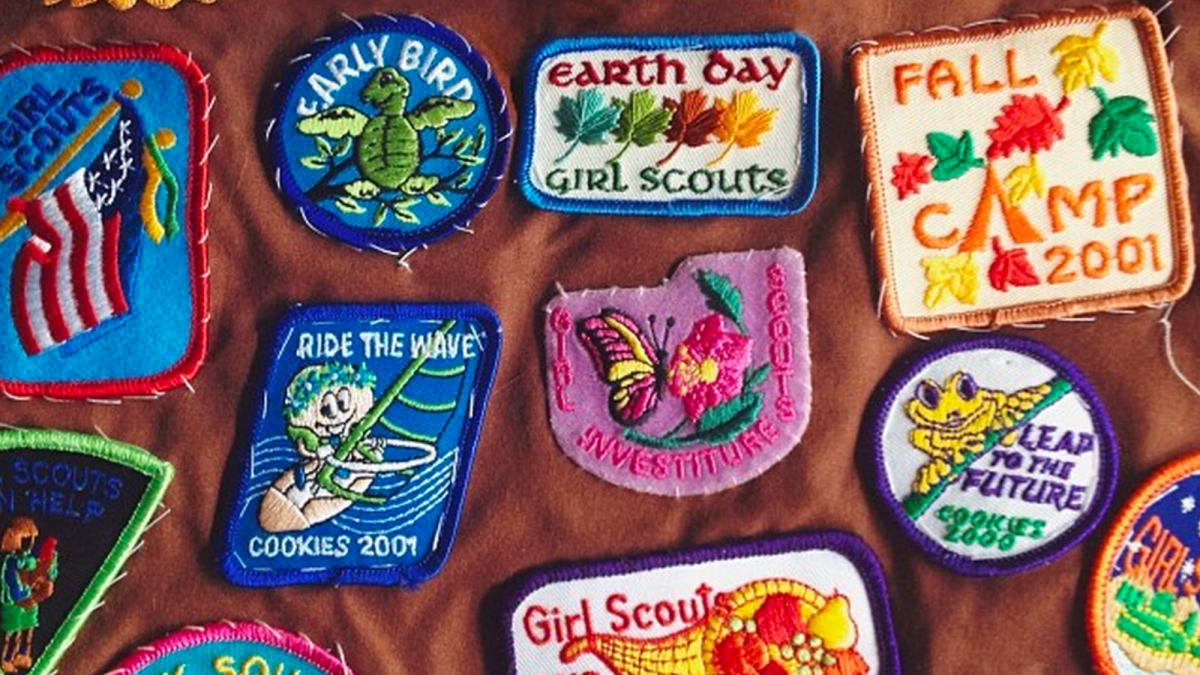Learn to Barefoot Water Ski for Free
Learn to Bareoot Water Ski Without Falling. Find out the secrets to learning to barefoot using new school technology. Barefooting is not supposed to be hard when you have the right information. My goal is to teach you not only how to barefoot without falling, but arm you with enough knowledge to be able to teach your family and friends to barefoot water ski. Your barefooting miracle is my passion.
Barefoot Water Skiing Photos
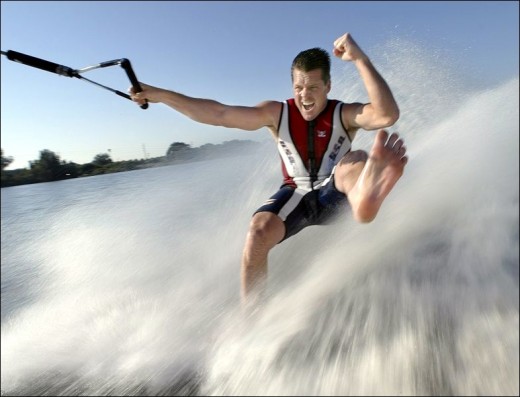
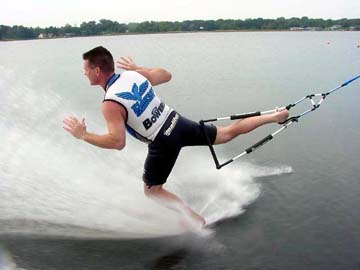
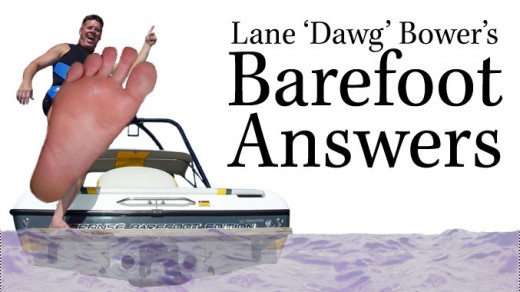
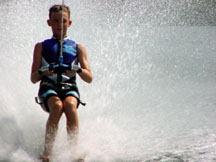
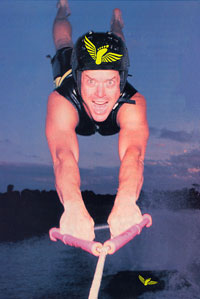
Barefooting's Foot Position Insider Secrets
Learning the Front Deep Water Start
Big Barefooters Learning without Falling!
The Easiest Way to Learn to Barefoot Water Ski
The Easiest Way to Learn to Barefoot Water Ski
"Practice does not make the athlete. It is the quality and intensity of practice that makes the athlete, not just repeated practicing."Ray Meyer, College Basketball Coach"Lane,Thanks for the e-mail asking what I would personally like to have help with. As for me, I feel comfortable at my current level. I have been using your video and coming along at a good pace. I will be down for personal instruction soon. The area I would like some help is in teaching first time barefooters. I have watched your tape and studied how you use the step off method. I have been able to get my wife up on Dawg Paws holding directly on to the boom off a wakeboard.Do you think it would be easier for her to learn on her feet doing a step off? I have a Barefoot Nautique (V Drive) and the boom on those is not located in the best position. The boom is also kind of low and there is a good deal of spray. Any help you could offer would be greatly appreciated.Thanks,Bill Dolan" As you know from the video, I used the step off method as the ideal way to teach beginners while on the boom only! The reason why I taught this method is that so many people get injured trying to “tumble-up” while holding directly on the boom. Note: Get the Bare Foot Boom Insider Secrets at http://www.bare-foot-boom.comThe reason for these injuries is two-fold; 1. The barefooter attempts too many starts (attempts at tumbling around) and their grip gives out at the worst possible time. This leads to an untimely fall when they knew to hold on, but were unable. 2. The second reason is that after tumbling around, they sit-up too far forward and their feet hit the water in a straight leg position causing their heels to dig in. This also causes a horrendous crash even though they know they will be safe if they do not let go of the boom. The problem is that this crash comes as such a surprise that it crushes them before getting to a safe butt glide position.Since I published my instructional video, The Footer’s Edge, I have changed what I believe the best way to teach a beginner. By far the safest way to teach a beginner is to put them in a swing such as a barefoot slalom handle or even better yet, The Easy Footer (877 685-6270). The Easy Footer allows the skier the ultimate in safety as long as some guidelines are followed that are not included in the video that Mike Seiple ships with it.***Hint: Get an Unfair Advantage by signing up for my Free 5-Day Video Course at http://www.DawgTvLive.com#1 Bare Foot Boom Height: with the skier in the handle (sitting like they are on a swing with the handle on their tail-bone), the skier's butt should be about an inch off the water while the boat is at a stand still. If it is not, adjust your boom height accordingly.#2 Driving: The driver is responsible for the safety of the skier! As long as the skier knows not to take their hands off of the boom, the driver becomes the one responsible for the skiers safety. If the skier ever catches a toe or looses footing the driver must respond immediately by turning the boat in a direction away from the boom so the skier is lifted out of the water long enough to get back into their posture and glide. The driver may then lower the skier back into the driver using a gentle turn towards the skier until their feet are safely back in the water. A slightly arced boat path is very helpful for getting the boom height right where it is most helpful to the skier.****Hint: Get my new No Fall Barefooting DVD, which Guarantees you can learn to barefoot water ski WITHOUT FALLING at http://www.thefootersedge.com/videos/no_fall_video.htmThe worst case scenario is that the skier catches their toe, their feet get swept behind them, and the inattentive driver does not rectify the problem quickly enough by lifting the skier out of the water before the skier gets pulled into the boom. This is especially critical with smaller skiers such as children.#3 Passengers: Many times passengers think they are helping me out by moving closer to the skier to put the boom lower. This in turn puts more weight on the skier’s feet and not so much on the handle that they are sitting on. While this is a good idea in time and with attentive driving, warn the passengers to only help when asked in a coordinated effort to keep the skier safe. The driver calls the shots and should ask for assistance when the boom should be lowered or raised. One thing that I ask of passengers is never to move quickly as this can cause too sudden of a change in the boom height for the skier. Also, I like at least one experienced passenger to carefully watch the skier with me so that if they fall, the passenger then immediately moves away from the boom in order to raise it along with my driving away from the skier to get them quickly out of a bad situation.#4 Before your first attempts: Always go over correct Posture, Glide, and the Power Band position so that the skier knows what the end position is to look like. All of this information is available in my Free 200 page Ebook at http://www.BeABarefooter.comUsing my instructional DVD and dry-land practice, carefully go over a perfect Butt Glide and Three-point Position. It is critical that the skier has perfected this on dry-land before attempting it in the swing.The best way to practice the butt glide is to hold a small Gatorade bottle between the legs as high above the knee as possible. This will keep the skier from opening the knees. Then have the skier extend the legs and lean back a bit until they are balanced on their butt without the use of a handle. Keep the feet and knees no more than six inches off the land (water). This balance point is the key to a great butt glide. This will take some abdominal strength so it is not a bad idea to get the sit-up program in gear. While in the Butt Glide position, practice keeping the handle next to the hips with the knuckles on the skiers' legs.To practice the Three-point Position on dry-land, go from handle tucked in to the handle up and out to the top of the knees while sitting forward, raising the knees and bring the heels wide and close to the outside of the hips. If this is done properly, the skier should never lose the bottle between the legs.Once these steps have been practiced to perfection on land, have the skier sit in the swing and practice the Butt Glide and the Three-point Position in the handle BEFORE taking off.When you feel the skiers confidence is good, have the skier lean back to a Butt Glide position holding their feet out of the water until you have accelerated enough to get the skier out of the chine spray (from the side of the boat). This speed should not exceed 20-25 mph for adults and 10-15 for small children. (Many times if I think the child is nervous, or if I am really concerned to gain some extra confidence between the skier and I, I simply put the boom high enough to allow the skier to assume a good position while the boat is at an idle. While doing this their should be a constant stream of praise and reinforcement while attending to good position and making sure the skier keeps the water line right below the ball of the foot consistently.) Then have the skier lift their knees without losing the bottle so that they can bring their heels back to their butt in a wide stance. Make sure the skiers' ankles are fully flexed to keep the ball of the foot from pushing through.After the skier is comfortable in the Three-point Position, and not before, have the skier squeeze their feet closer and stand to a good position as practiced on dry land.Tips:#1 Major dry-land practice#2 Be alert with the driving so that at any given moment you can lift the skier out of the water if they catch a toe.#3 Constantly monitor the attitude of the skier reassuring them that they can stop at any time if they are uncomfortable or nervous. Do not push the skier at this stage! This is simply a confidence outing and the skiers good state of mind (happiness), and most importantly their safety, is quintessential.#4 Slower is almost always better than faster, when it comes to boat speeds!#5 A carefully planned outing that has nothing but good vibes is the key to keeping the skier interested in barefooting. Most barefooters are very tough and they try to force toughness on family members and friends who do not appreciate it or do not respond well to it. Remember, it is always better to end the set one pass too early than one pass too late. I know I have been successful when the skier does not want to stop. This is a good thing!#6 Make sure you have a great boom because this put a tremendous amount of pressure on the boom. The safest boom out there is available for FREE Shipping for my members at our equipment page.Good luck to you in either learning or teaching someone else to barefoot in this manner which I believe to be the safest when the proper homework is done! Let me know how you do!! Email me your success stories!Please help me out and forward this to as many footers or even potential footers as you can. This will help to make this newsletter a BIG success! We want everyone to have a GREAT chance to achieve their own miracles!I am available to personally help you achieve your skiing goals by calling 877-685-6270 or visit our website @ http://www.thefootersedge.com. Feel free to email me personally with any requests that you have and I will try to make time to help you achieve your true potential! Expect a Miracle!Lane "Dawg" Bowerslane@lanedawg.comhttp://www.thefootersedge.com877 685-6270 <-- Call me!Check out my new equipment line!2002 Open Men's National ChampionAdditional Information
- WaterSki Barefoot
You can learn to barefoot without falling with the help of Lane "Dawg" Bowers as he guides you to your barefooting miracle. Barefooting is no longer the brutal sport of high speeds and brutal falls. Barefooting can be learned by people of all ages - American Barefoot Club
Barefoot Water Skiing Rules and Regulations for tournament competitors. - Toes Up or Faceplant!
Barefoot water skiing fanatics from Wisconsin have great interviews with barefoot water ski champions now retired. - Best Barefoot Boom at the Best Price
Get the best bare foot boom at the best price guaranteed to fit your boat or it is free. - ::Barefoot International Barefoot Booms, Universal Towers, Tower Booms, and Barefoot Suits ::
Barefoot International is the leader in barefoot water skiing and wakeboarding products. Barefoot booms, universal towers to fit any boat, fat sacs, and tower booms available to fit all boats. - :: Bare Foot Wet Suit Facts ::
Get the best barefoot suit at the best price, guaranteed to make you ski better or your money back. - Super Fly High Changes the World
goflyhigh.com is your source for the world's best training device. This universal tower extension raises the tower to an amazing 14 feet off the water. You are guaranteed to ski better immediately. - slickfeet50.com
Controversial non-steroid is no longer banned from barefoot water skiing competition.
Barefoot Skiing Resources
- Barefoot Skiing Speeds
barefoot skiing speeds are much safer with Lane "Dawg" Bowers No Fall Barefooting DVD Barefoot skiing speeds have basically come down to a basic formula that has been partially responsible for many serious... - Barefoot Water Skiing Steroid Scandal Ignites
Barefoot water skier, Lane "Dawg" Bowers swears under oath that he did not use topical steroids to enhance his performance in the 2003 Barefoot World Championships in Winter Haven, Florida. - :: Insider Secrets to Choosing the Best Boom for Your Boat ::
Get the insider secrets to getting the best barefoot boom at the best price, guaranteed to fit your boat or your money back. - Barefoot Boom Insider Secrets to Choosing a Contour Boom
Barefoot Booms biggest insider secrets that the pros do not want you to know. - Barefoot Boom Construction Secrets
Barefoot Booms are not all created equal. Getthe insider information that the pros do not wantyou to know. - Barefoot Booms New Tower Boom
Barefoot Booms have evolved into the next generation of booms that fit your tower. The tower boom is the ultimate in barefoot booms. Get the insider information. - American Barefoot Club
Get all the inside scoop on what is happening with the competitive world of barefoot water skiing. This is the official site with all the information about scores, rules, and schedule of events. - Wisconsin Dairy Farmer Barefooting
Heller Farms is a 1500 dairy cattle farm that happens to have it's own barefoot water skiing lake in the middle of their corn field. Daughters Elaine and Shannon Heller are two of the best girl barefooters in the world. - Toes Up or Faceplant!
This website provides great behind the scenes interviews with some of the best barefoot water skiers in the world. In addition they provide great videos about barefoot water skiing. - Barrie Bad Boys
The Barrie Bad Boys are Barefoot water skiers from Barrie, Ontario, Canada who seem to have everybody's number when it comes to endurance racing. They are the first family of Canadian barefoot racing. - Barefoot Answers
If you are stuck on some barefoot water skiing problem, this is the place to get the answers. Simply click on a problem listed to get an immediate solution to your barefooting miracle!
DawgTv on You Tube
Great 6 Pack and 3-Point Exercise: Learning the Basic Positions in Barefooting
subject: Great 6 Pack and 3-Point Exercise
"Making the simple complicated is commonplace;
making the complicated simple, awesomely simple,
that’s creative."
- Charles Mingus
“Correct muscle memory is the easiest thing to practice,
and is the foundation of all great skiers!”
-Laneimus Maximus circa 2003
Get an Unfair Advantage by Signing Up for MY Free 5-Day Video Course at http://dawgtvlive.com/
Totally cheat and blow your friends away by lerning my No Fall Barefooting DVD. I guarantee you will learn to barefoot without falling or your money back at http://thefootersedge.com/videos/no_fall_video.html
I have witnessed the power of dry land practice so
many times now that I more passionate than ever to
help you experience your own special miracle! If you
have ever wanted to;
1. learn to barefoot water ski
2. improve on bad form
3. revamp your glide for better one foots
4. just learn a new abs workout to improve your
six pack (don’t worry if yours is a one pack),
then this article is for you!
The following exercise will turn you into a barefooting
machine by tapping into the power of proper dry-land
practice. First, I am going to show you how to properly
practice the foot position for the Ultra Mega Glide
(http://www.thefootersedge.com/traumacenter/info/ne14.htm)
Next I will show you how to practice the butt glide and
3-point position without a rope, and finally the butt glide
and 3-point position WITH a rope.
The bonus is that I am going to show you how to set-up a
great dry land practice apparatus (pictures and video are
on my Virtual Ski School at
http://www.thefootersedge.com/newskischool/index.htm)
to realistically prepare you for the water! And the best part is,
if you follow my advice, you will learn all this without ever
getting hurt! What a huge benefit!
------------------Point and Flex!!!!!---------------------------
I want you to practice the following exercise where ever
you are right now! Point your tows and hold for several
seconds. Next, flex your ankles WITHOUT lifting your
toes. I have the pictures you can see to make sure you are
doing it right near the bottom of my Positions’ page
http://www.thefootersedge.com/positions.htm
It is critical that you perfect this flexed position because
the following exercises will build on this foundation.
Make sure to practice this exercise frequently so that
your muscle memory will be there perfectly when you
get on the water.
“point….hold…..flex….hold…. point….hold…..
flex….hold… point….hold…..flex….hold…”
If this bores you…get over it! It has been approved by
the Department of Redundancy Department.
Butt Glide 3-Point NO ROPE
Sit on the floor with your feet out in front of you. Place
your hands about one foot behind you and wider than
shoulder width apart. Lean back with your upper body
about 45 degrees from vertical.
Keeping your legs completely straight with your knees
together and toes pointed, raise your legs until your
knees are the same height as your shoulders. Let’s
call this the “V Sit Position” because your body
resembles the letter “V.”
Now add your point and flex exercise while holding your
“V” position! Can you feel your ‘flab-dominals’ working?
We are just getting started. Once you have the perfect flex,
bring your heels wide and back to your butt at about the
same width or just wider than your butt
WITHOUT SEPARATING YOUR KNEES …
WITHOUT LOWERING YOUR KNEES!
The key here is to keep your knees quiet (no movement).
If you have down this properly;
1. your knees are about shoulder height,
2. your knees are together
3. your ankles are flexed
4. your ankles are as close to your butt as possible
5. your heel is the only part of your foot on the water
6. your toes are not lifted, but the ball of your foot
is off of the surface you are on
Practice this over and over again until it is perfect, smooth,
and effortless! This will be a great abs workout as well
as turn you into a three-point machine!
Now let’s add another challenging element…
-----Butt Glide 3-Point Position WITH the Rope--------------
I have found a great way to simulate the realistic pull
of the boat that works much more dynamically than a
handle on a doorknob!
To make your own, all you need is;
(which is easier to use than a trick handle because it
does not get in the way of your knees as easily)
2. a pulley
3. a bucket
4. about 10 feet of rope
Fill your bucket with enough water to give you a
little resistance. I filled it all the way up with water for
me, but only about a third of the way full for my
wife Cindy who is 98 pounds (and featured on this video).
Connect them all together and scoot back on the floor
so that you are keeping the bucket about halfway off
the floor the entire time.
Adjust the height of the pully and the rope so you can
easily get into the “V Sit Position” and keep your
feet on the rope and your knees the same height as
your shoulders.
Pull the wakes handle into your hip so that the rubber
of the handle is touching your hip bone while keeping
your knuckles on your legs!
Your feet should be pointed with your toes overlapped
on the rope. Your knees should be straight WITHOUT
knee bend. Your knees are squeezed together.
Next take your feet off the rope without lowering your
knees or feet.
“Point…hold…FLEX…hold…Heels to your butt!”
This needs to be done in the exact same manner as
described above!
The only difference is the handle! There are two positions
for the handle;
1. IN to your hip
2. OUT on your knee caps
The key here is to accomplish this without ever opening
your knees or lowering your knees! The handle goes
from the IN position to the OUT position as your
knees remain constant!
When do you move the handle from IN to OUT?
As soon as your heels make it to your butt, move
the handle to your knee caps.
For women and children, I find it helpful to keep the
handle to the IN position until the feet are settled on the
water.
For big dudes, I find the handle should come out sooner
as long as the “V Sit Position” can be maintained!
The final stage is to prepare your 3-point position for
final check mode before standing!
After your handle is on your knees and you feel relaxed
and stable…
1. Shoulder Roll-roll your shoulders to the back so that
they are behind your chest with your shoulder blades
pinched together.
2. Meat Hook! Lift your rib cage in an upward motion
so you look all “Bowed-up!”
With this mastered, you may take to the water with more
confidence and preparation than I ever had when I was
learning. While others rip their heads off, you will foot
with the quiet confidence of a Jedi Warrior
(Star Wars reference)!
Get an Unfair Advantage by Signing Up for MY Free 5-Day Video Course at http://dawgtvlive.com/
Totally cheat and blow your friends away by lerning my No Fall Barefooting DVD. I guarantee you will learn to barefoot without falling or your money back at http://thefootersedge.com/videos/no_fall_video.html
Expect a Miracle!
Lane "Dawg" Bowers
2002 National Overall Barefoot Champion
lane@lanedawg.com
877 685-6270 <----------Call Me!
Fax: 509 756-4343
It is finally here!
Learning the Butt Glide Position Like a Pro
Subject: Attn Barefoot Beginners-
Learning the Butt Glide
“Or greatest weakness lies in giving up. The most
certain way to succeed is to always try just one
more time.”
-Thomas Edison
Get an Unfair Advantage by Signing Up for MY Free 5-Day Video Course at http://dawgtvlive.com/
Totally cheat and blow your friends away by lerning my No Fall Barefooting DVD. I guarantee you will learn to barefoot without falling or your money back at http://thefootersedge.com/videos/no_fall_video.htm
This article is for those of you who would like to
learn to be a successful barefooter on the 5-foot
rope or even behind the boat! It is also a critical skill
to learning to tumble-turn properly. I have seen many
advanced barefooters who would be well advised to
revisit this essential skill!
The correct progression to learning how to barefoot
in the safest possible way is as follows;
#1 Learn to Barefoot Using my Swing Method shown at
#2 Learn the Front Deep Water Start shown at
and also extensively on my 2 Hour Instructional video
(http://thefootersedge.com/equipment/2hour_dvd.html)
To learn the butt glide properly, it is critical that you have
the best barefoot shorts available. I recommend and even
guarantee the IronMan full wrap shorts and my IronMan barefoot wetsuit which you can see at
http://thefootersedge.com/thefootersedge/equipment/wetsuits.html
Now you are ready to learn the butt glide.
The critical elements for the butt glide are
#1 legs are perfectly straight, knees touching
#2 toes are pointed
#3 legs are beneath the rope
#4 handle is at your hip bone with your knuckles
pressed onto your legs
#5 balance position on butt with your feet the same height
as your head
#6 no part of your back is on the water (only tailbone)
#7 eyes open so they can see over knees
Only when you can sit comfortably in this position
can you truly prepare yourself for the next stage of
learning the three-point which you master on dry
land using my article and training featured in my
article, Great 6 Pack and 3-Point Exercise, which
you can read in my Trauma Center under “First Time Barefooters,” at
http://www.thefootersedge.com/traumacenter/index2.htm
The reason that so many barefooters have learned to
barefoot at The Footer’s Edge Training Center here in
Winter Haven, FL is because I guide them through the
steps of learning each of these steps separately in order
to eliminate the hard falls that come so easily to those
who are not trained properly.
In other words, you can learn the butt glide completely
separately from standing onto your feet! This is one
of my greatest teaching secrets and the best way to keep
beginners learning without falling!!!
Most barefooters push beginners too hard and try to get
them to stand before they can crawl (or butt glide).
For most barefooters, butt gliding can be learned around
25 mph. This is another confidence builder for beginners
and a great way to keep people fired-up about barefooting
by keeping them away from the high speeds that can turn
your eyelids inside out!
It is critical that the new barefooter learns to ride comfortably
on their butt up and down the lake with enough confidence
that they can relax, smile, and even talk with the boat driver!
I also recommend learning this start with a barefoot slalom
handle which is easy to learn than using any other handle
because there is less tuff on the handle to get between the
barefooter’s knees! You can see this handle in my online Pro Shop at http://www.thefootersedge.com/equipment/index.htm
Once you have mastered the butt glide position, you should
also be comfortable in the same butt glide position with your
feet OFF of the rope and about six inches off the water.
The handle must remain at your hip! Once you can ride in this
position, you can learn the windshield wipers and my patented
“No Feet Tumbles” which are featured on my Instructional video
and now available in my Virtual Ski School at
http://www.thefootersedge.com/newskischool/index.htm
Good luck and please let me know if I can help you achieve
any more of your barefoot goals!
Get an Unfair Advantage by Signing Up for MY Free 5-Day Video Course at http://dawgtvlive.com/
Totally cheat and blow your friends away by lerning my No Fall Barefooting DVD. I guarantee you will learn to barefoot without falling or your money back at http://thefootersedge.com/thefootersedge/equipment/no_fall_video.html
Expect a Miracle!
Lane "Dawg" Bowers
2003 World Overall Senior Barefoot Champion
http://www.barefootanswers.com
877 685-6270 <----------Call Me!
Fax: 509 756-4343
Barefoot Water Skiing Basics
The Truth About Falling!!!
"The Truth About Falling That Your Bruised Barefooting Buddies Wish They Knew."
Winter Haven, FL....Friday January 18, 2008
Roger Staubach, NFL Quarterback and Sports Broadcaster
“Confidence comes from hours and days and weeks and years of constant work and dedication. When I am in the last two minute of a December playoff game, I am drawing confidence from wind sprints I did the previous march. It’s just a circle: work and confidence, then more work and confidence.”
Get an Unfair Advantage by Signing Up for MY Free 5-Day Video Course at http://dawgtvlive.com/
Totally cheat and blow your friends away by lerning my No Fall Barefooting DVD. I guarantee you will learn to barefoot without falling or your money back at http://thefootersedge.com/thefootersedge/equipment/no_fall_video.html
“Lane, I realize that you get too many special requests and therefore I hesitate requesting this again. But, could you talk about falling. I know of quite a few folks who won't barefoot because they feel they WILL get hurt. I must say, I definitely have held back knowing that I need to go to work on Monday. All that I'm asking is... is there a good way to fall? A bad way to fall? What should we beware of? Falling is part of the sport however how can we reduce the possibility of injury? I would suspect that you must fall every day. Right? Any ideas here would be definitely appreciated. Congrats on your Worlds accomplishments. ...Jerry”
Well there,Jerry, this is an excellent question and I know that there are a lot of people who will benefit from your interest. Maybe you might know someone who might benefit from this too! I am going to answer your questions in two parts; the first is to give you what you need, and the second is to give you what you asked for in your email!
I looked for a quote that would lead me into an answer that would be appropriate. Read again what Roger has to say. Roger’s insight is awesome! He addresses the importance of having confidence and where confidence is derived. Properly placed confidence comes from preparation. Preparation comes from an aggressive plan that is carried out on a regular basis. What you really need to keep safe is preparation for the battle that is barefooting. I can tell from your question that you believe that it is O.K. to fall all the time. This is a fallacy! As hard as it will be for you to understand this without experiencing it first hand down here in paradise, it is true. Ask any of my advanced students and they will tell you the same thing…we hate to fall.
Do we fall? Yes. When a fall comes we usually have a good time laughing about it because it was unnecessary and definitely unexpected. Chances are, it came from a lack of preparation or a bad attitude toward the task at hand.
Do I fall every day? No. I sometimes go for weeks or months without falling.
I will give you an example that includes my wife. “Big Momma”, as we like to call her (Cindy), has footed three times over the last week which is the first time in almost a year.
I would expect that your old paradigm would suggest that she will most likely fall and fall hard. Because Big Momma is 98lbs soaking wet, and more importantly is my favorite wife (I jest), I am highly motivated to make sure she remains healthy and happy so I build her workouts with the same precision the SWAT team would enter a dangerous lair!
Because I have the added advantage of guiding her skiing from its conception, I know what she is capable of and what is risky for her. I start her off with what I am sure she can perform 100% of the time and gently work her towards the things that she is about 75% efficient. You notice that I did not allow her to try anything very difficult no matter how well she was skiing. She suggested to me that she wanted to try a back to front on her feet on the 7 foot rope. I disarmed her enthusiasm with the kind of care an NTSB agent would decide whether to cut the red wire or the blue wire. I talked her down from that dangerous precipice and kept her happily within her safety zone.
A lot of smart barefooting is simply good decision making for THAT person at THAT time for THOSE conditions. The best barefooters in the world make these decisions at lightening speed while they are skiing so as to avoid falling.
How do you get to this mythological place? Ask Roger Staubach! Well since he is not here I will reiterate. The beautiful place called N.F.P (N.F.P=No FALL Practice) can only be reached through the map of PREPARATION! Here is my list of suggestions in order of importance;
#1 A trip to paradise here in Winter Haven is the quickest way to achieve barefooting nirvana! You can plan on every day at The Footer’s Edge Training Center is equivalent to a summer on your own (I guarantee it). Visit the ski school page or the question and answer section to get information or call the command center at 877-685-6270 to book your miracle!
#2 If you do not have my 2 hour instructional video, The Footer’s Edge, you are crippling your efforts (call 877-685-6270 and relieve the angst). If you cannot afford to get down here to paradise and learn the optimal way, at least get the best instructional video on the planet and see your goals performed perfectly from a ton of cool angles and with all the speed, boom, and driving tips in one place! Then you can film yourself and compare it. You will learn twice as quickly and will have a much better shot at remaining safe. You also can add all these FREE tips I am sending to you to your collection and you will have ALL the cliff notes. (WARNING: This has been an unannounced haneous plug for video sales). Why am I so adamant about this? Because I am right. Of this I am 100% confident!
#3 Set goals and approach your skiing sets with a plan. Practice the move on dry land being very careful to make sure you are accurately performing the move. Use a mirror or video to make sure it is right!
#4 Break everything down into the smallest steps possible and practice these steps sequentially to perfection from easiest to most difficult. Here’s an example to put this into perspective if this seems too “pie-in-the ski” for you. Let’s say that you feel ready to try a front deep behind the boat. What is the first step. Write it out and then compare it to the following and let’s see if you are getting the hang of this…….. Go write it down!!!
If you were down here with me, I would do it in this order;
#1 check you Butt Glide and Three-Point Position ON THE Barefoot Boom. I bet you didn’t have this as your first step. Why? If I have never skied with you, I do not want any surprises or beating before we get down to business. The best way is always the safest way which for many people would be right on the boom. That way if you made a mistake in form it could be corrected without rolling your eye lids backwards!
#2 Same thing on the five or seven foot rope. If there is a problem we go to shoe-skis (Puppy Paws) and solve it safely.
#3 We work on the Butt Glide and Three-Point Position behind the boat. No standing up!
#4 Once you can perform these so well it is getting boring, I will most likely be confident that standing will be safe. This assumes that you have the right boat speeds, boom height, rope length, equipment, and good conditions. These are all things that can be BEAT INTO you or learned safely by reviewing a video of your trick safely while you crack a cold Diet Coke on the coach. Which sounds better to you? Just yesterday, I spent 1 hour reviewing video footage of a trick that I am bringing out of hibernation. I take great joy in this process! You should too!
BUT, I know this is not what you were asking me. You wanted to know how to protect yourself in a fall. My first answer was in short, “the best defense is an offense!” The second part of my answer is what you were wanting in the first place. What is the safest way to get to become a “crash test dummy?” This field is filled with willing participants lined up to compare whose got the best scars, best medivac story, and most complete mobile files filled with the most recent X-RAYS, MRI’s, and complete spinal views provided by your chiropractor. Having Doctors on speed dial is not necessarily a good thing. I am making light here for entertainment value only!
Here is your answer;
#1 ALWAYS let go when you fall on anything other than the barefoot boom. If you are on the barefoot boom, you need to communicate with the driver to discuss worse case scenarios. I recommend holding on to the boom until the boat driver slows down (boom only!) If your grip is getting tired, be honest with yourself and stop before you take that “one last run” to prove your machismo. It is ALWAYS better to “stop one pass too early than one pass too late!” One of the last falls that many people will take (before realizing they are better suited for wakeboarding) is the fall on the boom when they catch so violently that their hands get ripped off the boom leading to a “scorpion” fall where their heels hit them in the back of the head. This can break your back and surprises many people who think they cannot get hurt on the boom.
#2 Whenever falling forward, the most important piece of advice I can give you is to tuck your chin to your chest. This happens quickly and you need to become lightening fast with this reflex. You might think that tucking might put your face into harms way, but it does the opposite. At this point, you definitely are going to hit the water so the only question is what is the best way to finish this pass? It is critical that you do not fight against the force of falling into the water. On the contrary, go with the flow by tucking your chin, closing your eyes and mouth, and unless you would like a good punch in the face, put your hands down towards your hips. If you are the kind of person who likes a good beating, simply make a fist with both hands and place them about six inches away from your face before you hit the water. This will give you something to talk about at the watercooler tomorrow!
#3 Never, never, never lift your head away from the water. This would be a BAD thing!
#4 Avoid skiing in rolly or rough conditions. Although my buddies in St. Louis take great pride in skiing in a river that has more debris than I have seen in the entire state of Florida, I do not recommend skiing in water that has appliances, vehicles, dead fish, entire trees, or anything that would cause an inelastic collision with your feet!
#5 Keep your elbows in when you fall. The further away they are the more likely you will be to injure your shoulders.
#6 Be as loose as possible when you hit the water. The tighter and straighter you are, the easier things will break.
#7 I should have mentioned this earlier, but you should be thoroughly warmed up and stretched before skiing. The colder and tighter you are the more likely you will be to get hurt.
Well this now ends the longest article I have written to date, I think. It is glass out there as I am writing you this so I must now shred!
p.s. Thanks Jerry for the compliment. The Worlds were a blast! And yes, I did fall.
Email me with your progress. I am expecting a miracle for you!
Get an Unfair Advantage by Signing Up for MY Free 5-Day Video Course at http://dawgtvlive.com/
Totally cheat and blow your friends away by lerning my No Fall Barefooting DVD. I guarantee you will learn to barefoot without falling or your money back at http://thefootersedge.com/thefootersedge/equipment/no_fall_video.html
Expect a Miracle!
Lane "Dawg" Bowers
2007 National Barefoot Champion
http://www.barefootanswers.com
877 685-6270 <----------Call Me!
863 557-8871 <----------Direct Line
Fax: 509 756-4343
--------------------------------------------------------------------------------
Cheeking Outside the Wake
Cheeking Outside the Wake
Winter Haven, Fl...
The addictive challenge of barefooting is to ski that perfect pass where everything flows without the awareness of power and precision.
To achieve this elusive pass requires facing dangers others are not willing to face…and to prevail where others are not willing to sacrifice.
The passion to ride the adrenaline rush of victory over fear on our way to the next greater challenge parallels life in that the successful confrontation of fear defines our existence.
--Lanemus Maximus circa 2001
Get an Unfair Advantage by Signing Up for MY Free 5-Day Video Course at http://dawgtvlive.com/
Totally cheat and blow your friends away by lerning my No Fall Barefooting DVD. I guarantee you will learn to barefoot without falling or your money back at http://thefootersedge.com/thefootersedge/equipment/no_fall_video.html
Problem:
...When ever i hit the stern rollers i end up falling to one side
or the other, and actually the other day i really hurt my foot
when i lost my balance, and my foot got nailed by the handle.
anyway, i beleive that it has something to do with the
position of the handle, because i have been holding it against
my hips for the start, but then i am supposed to move it it
forward right? i just dont know when to do this and where to
hold it excactly. hope to hear from you soon, thanks alot.
-Parker Burke
Solution:
1. Equipment check-
rope: Make sure you are using a barefoot no-stretch rope so that
there is no bouncing going on that occurs when using a poly-
propylene rope (wally rope that skiers or tubers use).
handle: A barefoot handle such as the slalom handle is 15 inches
instead of 12 inches. This gives better balance unless you are a
small child who might be better off using a 12 inch jump handle.
wetsuit: this is not a place to skimp on money. It is critical that
you use a great barefoot suit and full wrap shorts. For my
recommendations go here.
Super Fly High: Tremendously easier with a high pull
2. Boat speed-
This is one of the most common mistakes. Keep your boat speed
at 25mph or less until you become proficient at cheeking outside
the wake.
Now that you are on a level playing field with the best chance of
success, you need to brush up on your butt glide position and then
learn how to change directions while in the butt glide position so you
can plant your feet in your three-point position in the calm water
outside the wake!
Position-The butt glide position should have your knees completely straight
with either one or both feet on the rope. Knees are together to keep
water out of your face.
Handle remains into your hips until your feet touch the water in your
three-point position. Only then does your handle come out in front of
your knees.
EXCEPTIONS: small kids or women(may need to keep the handle AT
their knees in the three point)
and BIG DUDES (220-380lbs) who I allow to keep their handle out further
from their hips to counterbalance their beef.
It is absolutely critical that your legs remain completely straight so that
your knees are never above the rope while in the butt glide position. A
bent knee is the beginning of many troubles ...trust me on this.
Another huge tip for added control is to make sure that your feet and your
head are the same distance from the water. This creates stability by
keeping your weight balanced.
Rolling over in the butt glide position occurs when you are not balanced.
I almost forgot. Make sure never to put your heel over the rope. Only put
your foot arch on the rope. This keeps your knees together and below the
rope.
If you roll over AND have your heels or ankles crossed on the rope, when
the handle comes out of your hands, it smashes your feet when it cannot
get away. This usually feels like you have broken bones in your feet from
the impact...but it usually is just a nasty contusion.
The only exception to heel over the rope is when you are wearing shoe
skis. In this case, put only one heel over the rope. Keep the other off
and straight.
Cheeking Outside the Wake-
With your new and improved position, think of the wake as a big bowl
were you want to get up enough momentum to get up and out.
As soon as you can sit up into your butt glide position, begin by leaning
to the left to get your momentum started to the left. I usually tell kids
to fart to the left to go left, fart to the right to go right.
Do not try to get out on your first attempt. Simply start the momentum
and then as soon as it dies, fart in the other direction. With two or
three goes at building up your edging speed, you will be able to cheek
out to the trick curl.
Bonus points-
If you start way off to one side instead of directly behind the boat, you
can either get one swing and get right outside or even better...get out
side the wake without having to go over it!
I hope this helps. If you need more help try a layer of SlickFeet50.
Barefoot Boom Insider Secrets
- Barefoot Boom Insider Secrets
Barefoot Booms are no longer used by just barefooters. The biggest industry secret is that wakeboarders, combo skiers, slalom skiers, knee boarders, air chair riders, trick skiers, and barefooters are all learning without falling. Get the best barefo
- Barefoot Skiing Speeds
barefoot skiing speeds are much safer with Lane "Dawg" Bowers No Fall Barefooting DVD Barefoot skiing speeds have basically come down to a basic formula that has been partially responsible for many serious... - Wisconsin Barefooting Rocks
Get all the inside scoop about what is happening in Wisconsin Barefooting. Wisconsin IS the real deal when it comes to barefoot water skiing and there are more fanatical barefooters here than anywhere else in the world! - Barrie Bad Boys
These guys are a bunch of yahoos from Canada that seem to dominate all the barefooting endurance racing.
Summary
You can learn to barefoot water ski without falling if you get a game plan together before ever getting on the water. Simply practice your "butt glide," "three-point," and "posture, glide, and powerband" positions on dry land before ever getting on the water. This will give you an unfair advantage over all your friends and will help you to be able to teach others as well.
